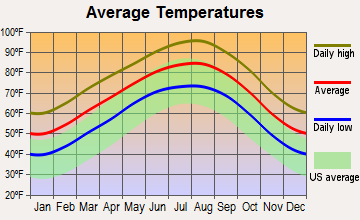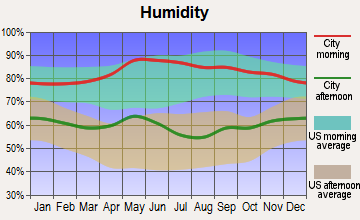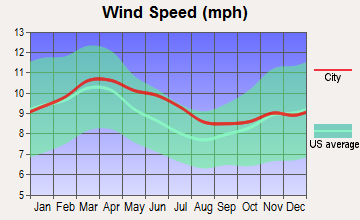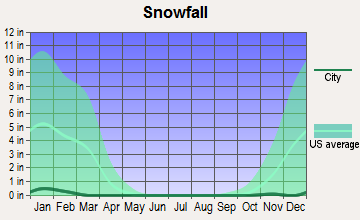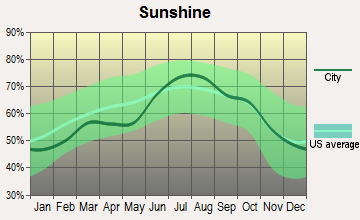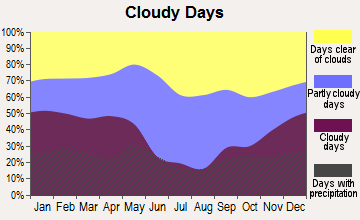 Brooklyn, NY
Brooklyn, NY
 Austin, TX
Austin, TX
Brooklyn, NY, and Austin, TX, although part of the United States, provide different living experiences. The two cities have distinct lifestyles, influenced by factors like crime and safety, weather, cost of living, education, and work opportunities. Both cities offer unique culture, food, and entertainment options, with significant differences in taxes, real estate, and infrastructure. Both cities have their pros and cons, and deciding between the two will highly depend on one's individual preferences and needs.

 | Cities with richest African American history and culture (960 replies) |
 | 2020s Midpoint: Top 50 US Cities... (376 replies) |
 | Cities that are Perceived as Larger or Smaller than they are (262 replies) |
 | Which cities have grown or faded in relevance the most throughout your lifetime? (440 replies) |
 | Skyline Game (2007 replies) |
 | Ranking the Cities based on the number of Luxury and Upscale hotels. (81 replies) |
 Brooklyn, NY and
Brooklyn, NY and  Austin, TX : 1,510.8 miles
Austin, TX : 1,510.8 miles
Brooklyn's population is larger by 163%. The population of Austin has grown by 307,615 people (46.9%) during that time.
| Population | ||
| Type | Brooklyn | Austin |
|---|---|---|
| Population | 2,538,705 | 964,177 |
| Female / male percentage | 53.1% / 46.9%
|
49.1% / 50.9%
|
Both Brooklyn and Austin are generally safe, but they do have areas with higher crime rates. In Brooklyn, crime rates are generally higher than in Austin, but it also significantly differs per neighborhood. Austin's crime rate, while lower, is above the national average, with the east and northern parts of the city experiencing more crime. Both cities promote neighborhood watch programs and have strong police presence.
The cost of living in Brooklyn is significantly higher than in Austin. You'll pay more for groceries, housing, utilities, and transportation. In Austin, the cost of living is more moderate and is one of the reasons why many people are moving there from more expensive cities. Both cities have seen a significant rise in cost of living over the years along with their economic growth.
New York State has an income tax ranging from 4% to 8.82% depending on your income level. However, Texas doesn’t impose a state income tax, which for many is a significant cost saving.
The property tax rate in Brooklyn varies but is generally around 0.90%. Austin has a considerably higher property tax rate at around 1.83%. The tax revenue funds services like public schools and law enforcement in both cities.
New York State has a sales tax rate of 4% which, combined with the Brooklyn city sales tax, comes to 8.875%. Texas has a state sales tax rate of 6.25% and Austin has an additional 2% for a total sales tax rate of 8.25%.
| Income | ||
| Type | Brooklyn | Austin |
|---|---|---|
| Estimated median household income | $67,567 | $79,542 |
| Estimated per capita income | $39,536 | $53,937 |
| Cost of living index (U.S. average is 100) | 185.4 | 96.4 |
If you make $50,000 in Austin, you will have to make $96,162 in Brooklyn to maintain the same standard of living.
Brooklyn is located on the western end of Long Island and is bordered by the Hudson River. It has a mix of urban and green spaces, including the popular Prospect Park. Austin, located in the Hill Country region of Texas, has a mix of landscapes, including rivers, lakes, and rolling hills, great for outdoor enthusiasts.
| Geographical information | ||
| Type | Brooklyn | Austin |
|---|---|---|
| Land area | 70.6 sq. miles | 251.5 sq. miles |
| Population density | 35,956 people per sq. mile | 3,833.4 people per sq. mile |
 Brooklyn, NY
Brooklyn, NY
 Austin, TX
Austin, TX
Both cities have strong education systems. Brooklyn is part of the New York City Department of Education, the largest school district in the U.S., and also has a number of private and charter school options. Austin also offers a variety of public and private schools, but has a lower student-teacher ratio. Both cities are home to renowned universities, Brooklyn College in Brooklyn and the University of Texas in Austin.
| Education level (25-year-olds and older) | ||
| Type | Brooklyn | Austin |
|---|---|---|
| Bachelor's degree or higher | 21.8% | 59.9% |
| Graduate or professional degree | 8.8% | 21.9% |
| High school or higher | 68.8% | 92.8% |
In Brooklyn, the economy is diverse with sectors like healthcare, education, and retail trade leading the way. Austin's economy is also diversified, but there is a significant emphasis on tech, making it a prime location for start-ups and tech workers. Unemployment rates tend to be lower in Austin compared to Brooklyn.
Brooklyn's biggest employers are government entities including the City of New York and Maimonides Medical Center. Austin is home to many tech companies, including Dell and IBM, but the State of Texas and the University of Texas at Austin also employ many residents.
In Brooklyn (Kings County), 82.1% voted for Democrats and 16.9% for Republicans in 2012 Presidential Election. In Austin (Travis County), 60.2% voted for Democrats and 36.2% for Republicans.
Brooklyn experiences a humid subtropical climate with mild to cool winters and hot, humid summers. Austin, meanwhile, also experiences a humid subtropical climate, but with longer, hotter summers and mild winters - ideal for those who enjoy warm weather. Both cities see heavy rainfall, but Austin also gets severe thunderstorms with high winds, especially in spring and fall.
| Weather and climate | ||
| Type | Brooklyn | Austin |
|---|---|---|
| Temperature - Average | 55.1°F | 68.5°F |
| Humidity - Average morning or afternoon humidity | 68.7% | 75.2% |
| Humidity - Differences between morning and afternoon humidity | 26.1% | 40% |
| Humidity - Maximum monthly morning or afternoon humidity | 76.8% | 89% |
| Humidity - Minimum monthly morning or afternoon humidity | 50.7% | 49% |
| Precipitation - Yearly average | 46.5 in | 33.7 in |
| Snowfall - Yearly average | 53.4 in | 1.4 in |
| Clouds - Number of days clear of clouds | 16.7% | 19.3% |
| Sunshine amount - Average | 60.2% | 63.3% |
| Sunshine amount - Differences during a year | 20% | 22% |
| Sunshine amount - Maximum monthly | 64% | 72% |
| Sunshine amount - Minimum monthly | 44% | 50% |
| Wind speed - Average | 10.6 mph | 7.2 mph |
| Natural disasters | ||
| Type | Brooklyn | Austin |
|---|---|---|
| Tornado activity compared to U.S. average | 56.4% | 137.9% |
| Earthquake activity compared to U.S. average | 30.8% | 80.4% |
| Natural disasters compared to U.S. average | 17% | 29% |
Brooklyn's public transportation system includes the famous New York Subway, making commuting within the city and to Manhattan easy. Austin's public transportation includes buses and rail, but is less extensive, leading many to commute by car. Both cities offer bike-friendly amenities and have several ride-hailing services available.
| Transport | ||
| Type | Brooklyn | Austin |
|---|---|---|
| Amtrak stations | 0 | 1 |
| Amtrak stations nearby | 3 | 1 |
| FAA registered aircraft | 149 | 911 |
| FAA registered aircraft manufacturers and dealers | 2 | 21 |
Real estate prices in Brooklyn are quite high compared to the national average, with limited availability due to high demand. Austin's real estate market is more affordable, but still higher than the national average. Both cities offer a mix of apartments, houses, and condos for rent or purchase.
Brooklyn offers diverse neighborhoods each with its own unique vibe, from hip Williamsburg to family-friendly Park Slope. Austin's neighborhoods range from the historic Hyde Park to the vibrant entertainment district of Sixth Street. Both cities offer options for every lifestyle and budget.
| Houses and residents | ||
| Type | Brooklyn | Austin |
|---|---|---|
| Houses | 930,866 | 469,156 |
| Average household size (people) | 2.7 | 2.4 |
| Houses occupied | 880,727 (94.6%) | 449,399 (95.8%) |
| Houses occupied by owners | 238,290 (27.1%) | 196,458 (43.7%) |
| Houses occupied by renters | 642,437 (72.9%) | 252,941 (56.3%) |
| Median rent asked for vacant for-rent units | $1,589 | $1,286 |
| Median price asked for vacant for-sale houses and condos | $1,621,117 | $549,769 |
| Estimated median house or condo value | $793,300 | $482,900 |
| Median number of rooms in apartments | 3.6 | 3.4 |
| Median number of rooms in houses and condos | 5.2 | 6 |
| Renting percentage | 72.3% | 54.9% |
| Housing density (houses/condos per square mile) | 13,184 | 1,865.3 |
| Household income disparities | 48.5% | 44.8% |
| Housing units without a mortgage | 29,251 (32.9%) | 1,799 (1.3%) |
| Housing units with both a second mortgage and home equity loan | 183 (0.2%) | 6,421 (4.8%) |
| Housing units with a mortgage | 59,793 (67.1%) | 132,628 (98.7%) |
| Housing units with a home equity loan | 4,512 (5.1%) | 206 (0.2%) |
| Housing units with a second mortgage | 5,098 (5.7%) | 8,515 (6.3%) |
| Housing units lacking complete kitchen facilities | 1.5% | 0.9% |
| Housing units lacking complete plumbing facilities | 1.7% | 0.6% |
Brooklyn's main industries include healthcare, education, and social services, with the highest number of professionals also in these fields. Austin is recognized as a tech hub with a booming tech and startup scene and has the majority of its workforce in the tech industry.
Brooklyn offers excellent healthcare facilities, with numerous hospitals and clinics, including the Brooklyn Hospital Center and Maimonides Medical Center. Austin is home to nationally ranked hospitals like the Dell Seton Medical Center at the University of Texas and the Heart Hospital of Austin. Both cities have top-quality health care facilities that are accessible and reliable.
| Health (county statistics) | ||
| Type | Brooklyn | Austin |
|---|---|---|
| General health status score of residents in this county from 1 (poor) to 5 (excellent) | 3.4 | 3.6 |
| Average weight of females (lbs) | 161.8 lbs | 159.2 lbs |
| Average weight of males (lbs) | 185.6 lbs | 194.2 lbs |
| Residents visited a dentist within the past year | 67.1% | 68% |
| Residents exercised in the past month | 69.9% | 77.3% |
| Adult residents drank alcohol in the past 30 days | 71.7% | 60.5% |
| Residents smoked 100+ cigarettes in their lives | 39.2% | 37.3% |
Brooklyn boasts significant infrastructure with a large public transit system, making it easy to get around without a car. Austin also has public transit, but it's not as extensive; a car is almost a necessity. Both cities have international airports and are investing in infrastructure improvements to accommodate their growing populations.
| Infrastructure | ||
| Type | Brooklyn | Austin |
|---|---|---|
| Hospitals | 104 | 65 |
| TV stations | 29 | 20 |
| Bank branches located here | 271 | 264 |
| Bank institutions located here | 41 | 43 |
| Main business address for public companies | 9 | 44 |
| Drinking water stations with no reported violations in the past | 12 | 46 |
| Drinking water stations with reported violations in the past | 75 | 95 |
Brooklyn offers a culturally diverse experience with a mixture of cuisines, museums, music, and art experiences. Austin also offers a diverse food scene, famous for its barbecue and Tex-Mex cuisine, and is known as the "Live Music Capital of the World". Both cities provide a rich cultural experience for residents and visitors.
Brooklyn is home to professional sports teams like the Brooklyn Nets and New York Islanders. Austin is home to Austin FC in the MLS and the University of Texas Longhorns, and it also hosts the annual Formula 1 United States Grand Prix.







